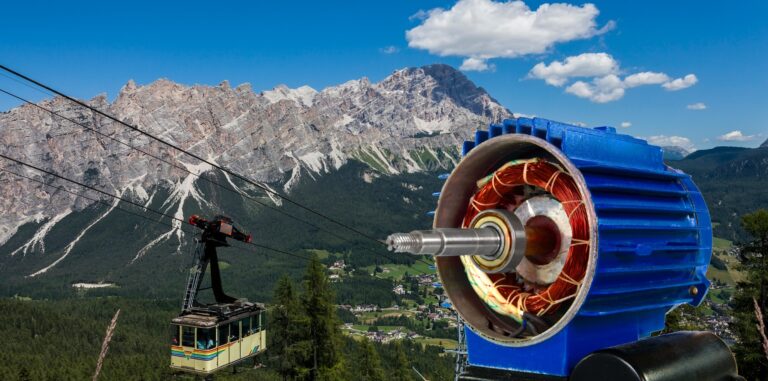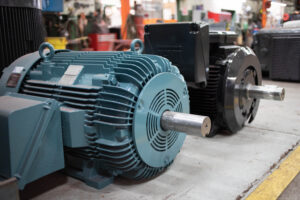
Most motor manufacturers design their motors under the assumption that the air density of the place of installation is at sea level, or near sea level. This can cause issues with unwanted temperature increase in your motor when it is run at higher altitudes. Throughout this article we will discuss why this happens and how you can compensate for it.
Differences in Air Quality
Travelling from sea level to higher altitudes brings changes in air quality. At higher altitudes you will find a marked reduction in air pressure and density, lower levels of humidity, and larger temperature swings. Induction motors rely on ambient air to dissipate efficiency losses converted to heat. This is harder to do at higher altitudes due to the reduction in air pressure and density, and can cause your motor to run at higher temperatures than usual.
Effects
At higher altitudes the air gets thinner. This phenomenon reduces your motors ability to dissipate the heat it generates. Depending on elevation, ambient temperature, and your motor’s temperature rise characteristics; you will probably need to de-rate your motor to help it stay within the temperature parameters of its insulation class.
Some additional effects of high altitude on your motor are:
- Reduction in thermal capacity.
- Reduction in combustion efficiency.
- Reduction in efficiency of heat dissipation, causing your motor to run hot.
- Temperature increase of 1% per 100 feet (generally).
Letting your motor run as normal at higher altitudes can cause these issues and more, leading to a shortened lifespan of your motor.
How to Compensate
NEMA MG-1 specifies that you should de-rate your motor by 3% per every 500 meters (1,640 feet) of altitude gain above 1000 meters (3,280 feet) above sea level. There is a complex calculation you can do to find the exact amount of de-rating you need to do for your specific motor and altitude, or you can find basic parameters for de-rating in the table below:
| Altitude (Feet) | HP De-rating Factor |
| 3,301 – 5,000 | 0.97 |
| 5,001 – 6,600 | 0.94 |
| 6,601 – 8,300 | 0.90 |
| 8,301 – 9,900 | 0.86 |
| 9,901 – 11,500 | 0.82 |
| 11,501-13,100 | 0.78 |
| 13,101 – 14,700 | 0.74 |
| 14,701 – 16,300 | 0.70 |
You can also compensate for higher altitudes by keeping your motor at a lower ambient temperature, using a higher class of insulation, or by using a service factor rated motor.
This article contains information from EMC’s Getting the Most out of Your Electric Motor webinar
Got More Motor Questions? We Can Help!
Call 800-595-5315 Or Connect With Our Expert Technicians Here:
Other Articles
- How to Reduce Motor Downtime and Keep Your Motor Happy
- Critical Spare Planning
- The Three Most Common Externally Caused Motor Failures

Gary has 30+ years of experience at Energy Management Corporation working in all aspects of motor and mechanical repairs. In his extensive career, some of the interesting projects he has worked on include Hoover Dam hydro generators, Utah power sub stations, harmonic filters for VFDs, and motor for the Buckeye Bullet that set the land speed record for electric car.





